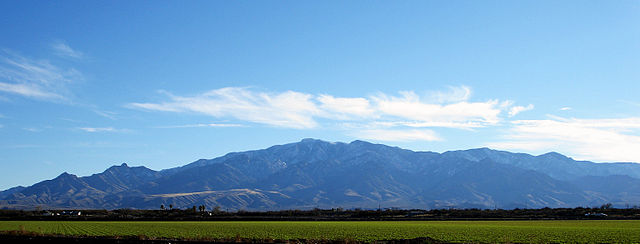AIRFA and Traditional Cultural Properties
NAGPRA gave Native Americans control over the remains of their ancestors and of certain types of objects. However, it does nothing to protect Native American landscapes or sacred areas. Some protection, however, is given by the American Indian Religious Freedom Act (AIRFA) and by the concept of Traditional Cultural Properties embedded in the National Historic Preservation Act.
The American Indian Religious Freedom Act (AIRFA), passed in 1978, states that "….. it shall be the policy of the United States to protect and preserve for American Indians their inherent right of freedom to believe, express, and exercise the traditional religions….. including but not limited to access to sites, use and possession of sacred objects, and the freedom to worship through ceremonial and traditional rites." Through a series of court rulings, it has been established that this law generally requires federal agencies to consult with tribes about anything that might affect their religious practices, but that the law does not compel the agencies to protect those practices or their sacred sites.
|
The construction of Lake Powell in 1963 resulted in the submersion of a prayer spot used by Navajo medicine men. AIRFA, passed in 1978, was designed to limit the destruction of areas needed for Native American religious practices. However, the law falls short of mandating their protection.
Source - Shutterstock Image ID - 66105643.
|
The National Historic Preservation Act, passed in 1966, was designed to encourage the preservation of properties of historic or cultural importance. This very broad law contains many provisions, one of which requires federal agencies to follow a set of procedures designed to minimize damage to such properties. Any project conducted on federal lands or with federal funds or permits must go through a vetting process before it can be approved. This process is designed to ensure that reasonable efforts are made to avoid causing damage to important properties, including those considered to be traditional cultural properties.
A traditional cultural property is defined as one that is valued by a particularly community for the role that it plays in sustaining that community. Such properties are important in community traditions and are generally well known through oral histories. As with the American Indian Religious Freedom Act, a traditional cultural property does not receive automatic protection. Actions that damage or even destroy such a property may still be approved, but they must first go through a rigorous vetting process intended to minimize thoughtless decision-making. Several properties discussed in this class can be considered traditional cultural properties, including Blue Lake for the Taos (see Module 3), Red Butte for the Havasupai (see Module 9), and Spirit Mountain for the Southern Paiute (see Module 12).
|
Mount Graham, located in southeastern Arizona, is home to an observatory complex operated by the University of Arizona. It is also a traditional cultural property important to the Western Apache, who believe that the gaan, or mountain spirits, reside there. The Western Apache have fought the construction of new observatory facilities on the mountain, arguing that the facilities desecrate the home of the mountain spirits.
Source - https://en.wikipedia.org/wiki/File:Mt_graham_2008.JPG |


